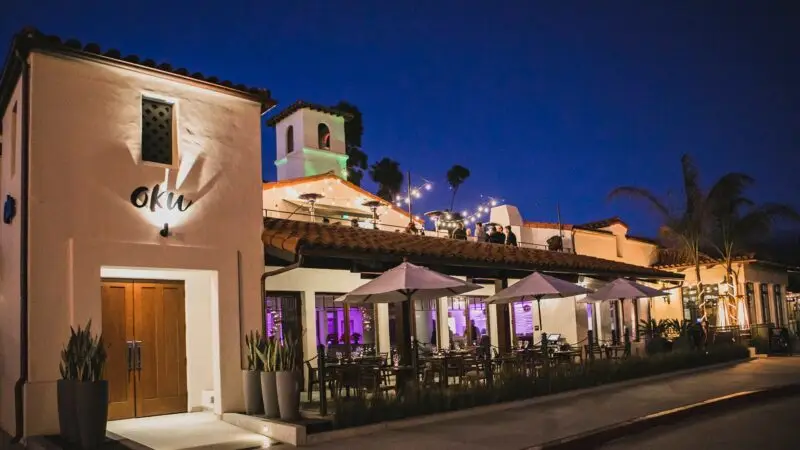On March 17, it’s always a good idea to wear a bit of green.
While we’d never advocate for unwanted pinching, the tradition of teasing those who fail to adhere to the unspoken dress code of St. Patrick’s Day is but one of many fascinating elements to this unique and uplifting holiday.
Often viewed as an occasion for revelry and merriment, Saint Patrick’s Day or the Feast of Saint Patrick technically marks the accepted death date of the occasion’s namesake: a 5th century Christian missionary credited with bringing the religion to Ireland.
But as the foremost patron saint of Ireland, Patrick’s legacy is today remembered with parades and festivals.
As for the impressive amounts of alcohol consumed each March 17, the historical justification stems from the Church opting to lift Lent restrictions for the occasion, meaning adherent Christians were allowed to drink and eat as they pleased for the day — and regularly made the most of it.
But before we dive into the traditions that today define our St. Patrick’s Day celebrations, let’s first get better acquainted with St. Patrick himself and how we got here in the first place.
Origins of St. Patrick’s Day
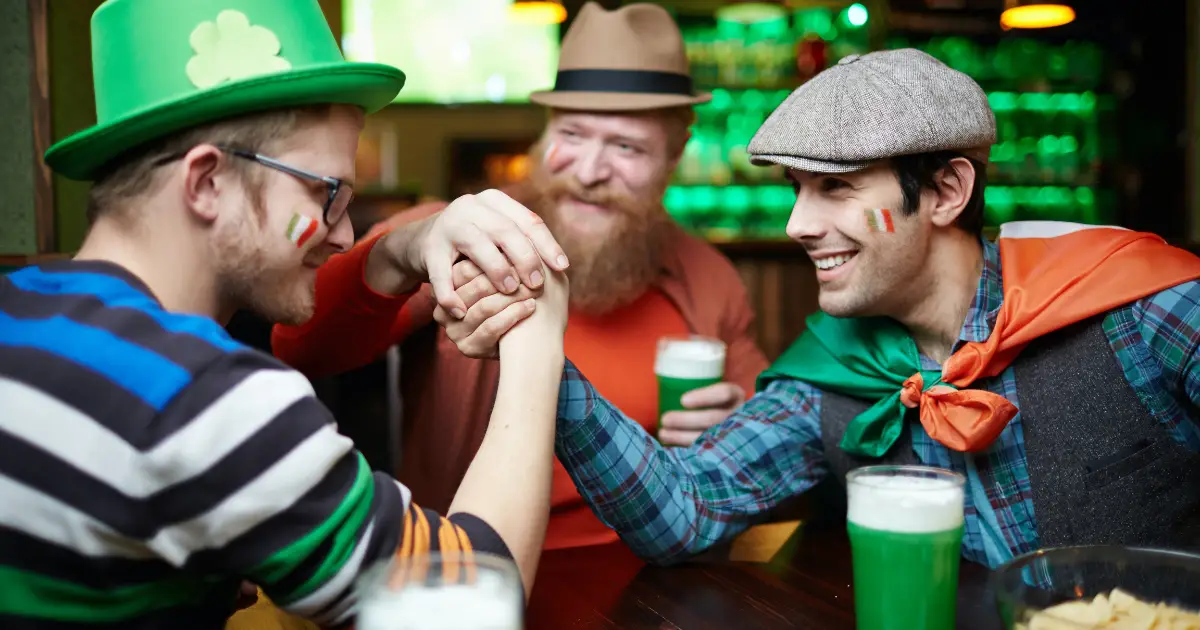
The fact of the matter is that we don’t know much about the man known as Saint Patrick that he didn’t tell us himself. With only this admittedly biased source to work from, Patrick’s “Declaration” offers a biography of man born into 4th century Roman Britain, where he was kidnapped at 16 and taken as a slave to Gaelic Ireland.
After a stint as a shepherd, Patrick would leave Ireland, only to return six years later with a mission to convert Irish pagans to Christianity. This would become his life’s work, and he’d claim to have converted thousands of people to his cause, which would someone morph into a completely unfounded mythology about Patrick driving snakes from Ireland.
Allegedly buried in at Downpatrick Cathedral in County Down, Northern Ireland, Patrick’s death is widely believed to have taken place on March 17. Thus, we arrive back at the establishment of St. Patrick’s Day by the Christian Church as a feast holiday in the early 17th century.
Over the years, the occasion has morphed from one largely religious (if still rather rowdy) into something encompassing a broad swath of Irish culture, heritage, and pride.
Today, St. Patrick’s Day is celebrated across the globe, though it’s only officially recognized as a public holiday in the Republic of Ireland and Northern Ireland. Regardless, several notable traditions are now considered inseparable from the holiday itself. What’s with all the green? Here’s the scoop on St. Patrick’s signature color, shamrocks, and more.
St. Patrick’s Day Traditions
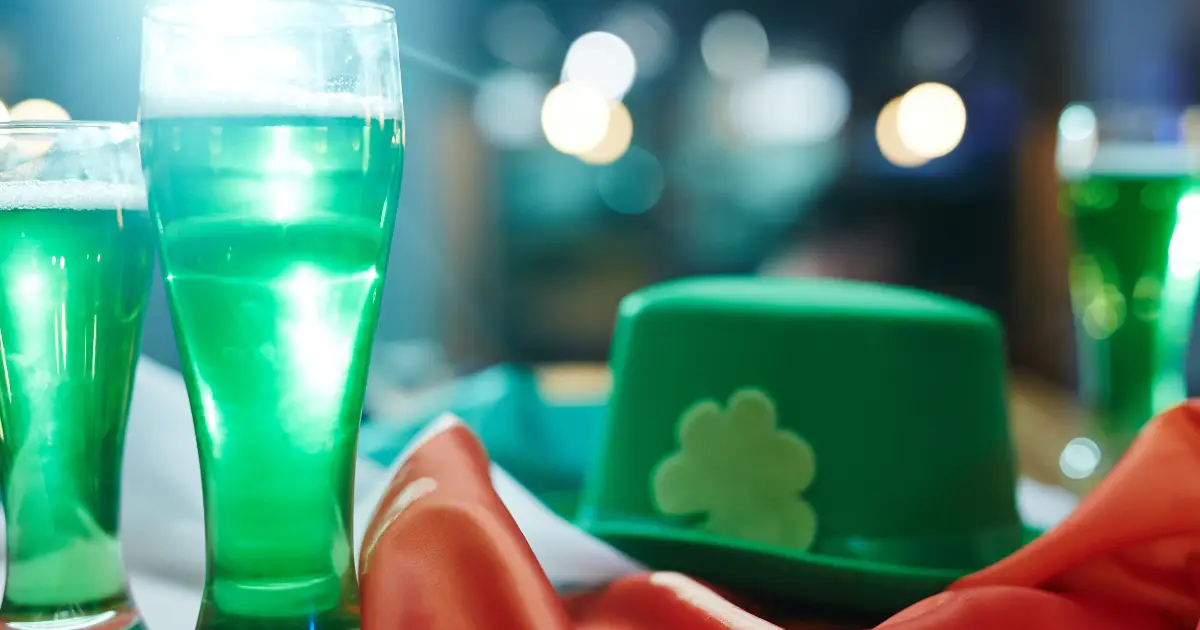
When it comes to the most popular traditions associated with St. Patrick’s Day, there’s often very little explanation required. Arriving bit by bit over the years, it’s funny to realize that, at some point, celebration St. Patrick’s Day has absolutely no association with green at first.
It’s true! Blue was, in fact, the color of choice for St. Patrick’s Day fashion until sometime in the late 18th or early 19th century, when green became synonymous with the holiday. The timing aligns with the association of the shamrock or clover as a symbol of Irish pride. Obviously, Ireland is also a geography bursting with gorgeous grassy hills and stunning green vistas, so it now seems hard to imagine the nation ever adopting blue as their primary color.
Regardless, green is now the gold standard, which is why many bars have some fun putting color dye in their draft beers for St. Patrick’s Day.
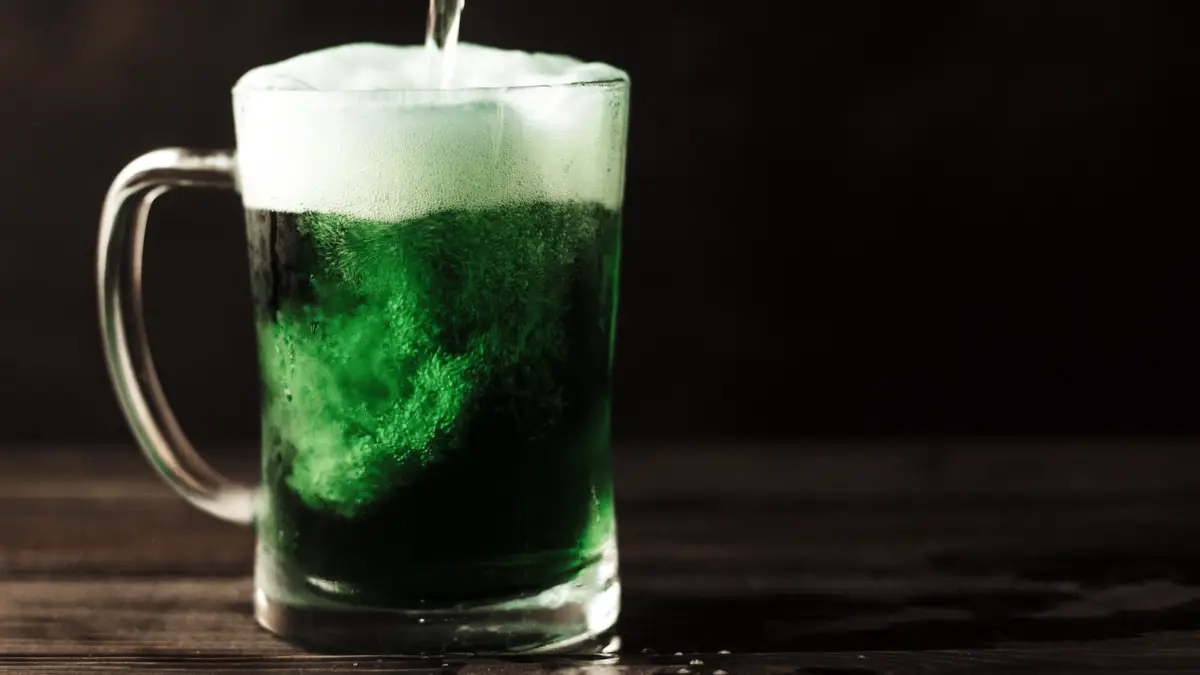
As for why folks feel inclined to pinch those not wearing a stitch of green on March 17, lore suggests that being dressed in green makes one invisible to leprechauns, defined by the Oxford English Dictionary as “a creature like a little man, with magic powers,” who themselves are apparently out to pinch us whenever possible.
That’s also where the shamrocks come in. Also known as four-leaf clovers, it was, in fact, a three-leafed variety that St. Patrick supposedly used to teach new converts about the Holy Trinity. Today, shamrocks are synonymous with Irish pride and a belief that finding the rarer, four-leaf variation will bring its finder good fortune.
Other traditions to emerge as St. Patrick’s Day mainstays include enjoying a hearty dinner of corn beef and cabbage; sipping on a Guinness (Ireland’s most popular beer); or, in Chicago’s case, dyeing the Chicago River green every year.
South Bay
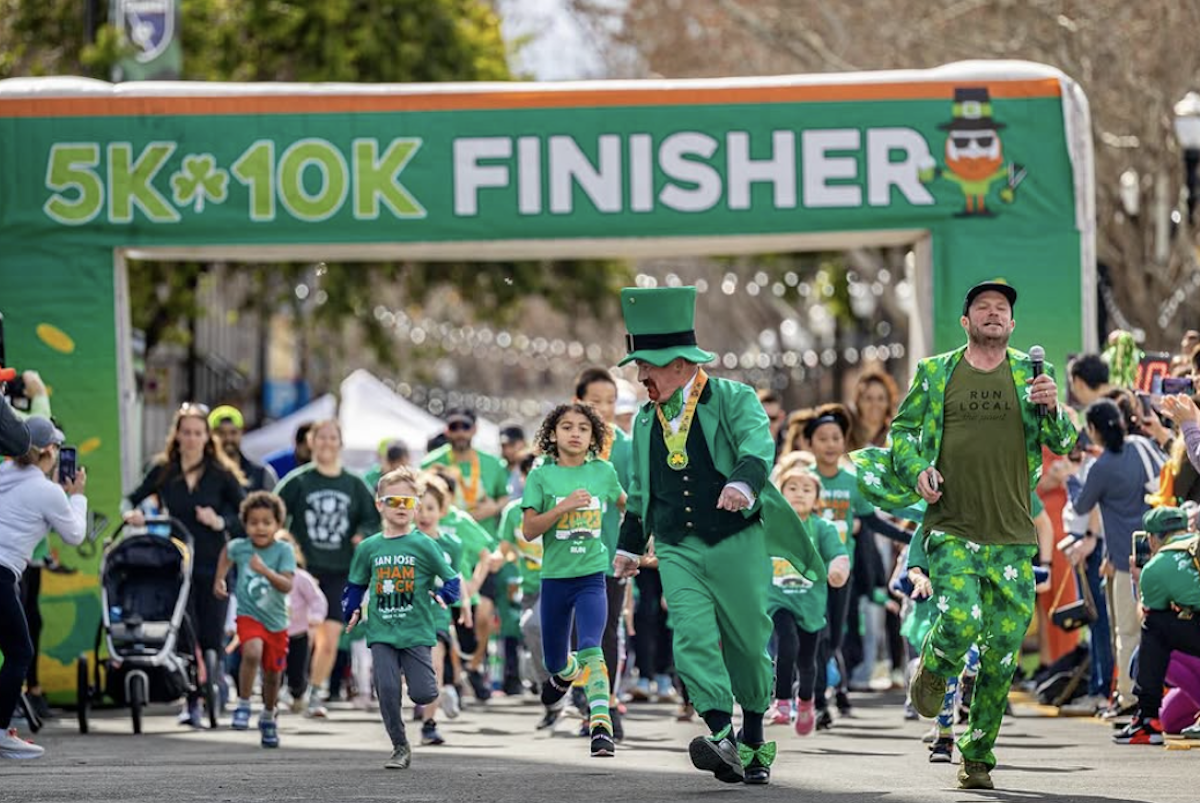
March 15
With profits directly benefiting the San Jose – Dublin Sister City Program’s Pat McMahon Scholarship, this annual day of festive races is both fun and serving a good cause. Choose between a 5K and a 10K for the adults and the Leprechaun Chase Kids Run for the kiddos. There’s a post-race party hosted by O’Flaherty’s Irish Pub & Five Points, live entertainment and more.
East Bay
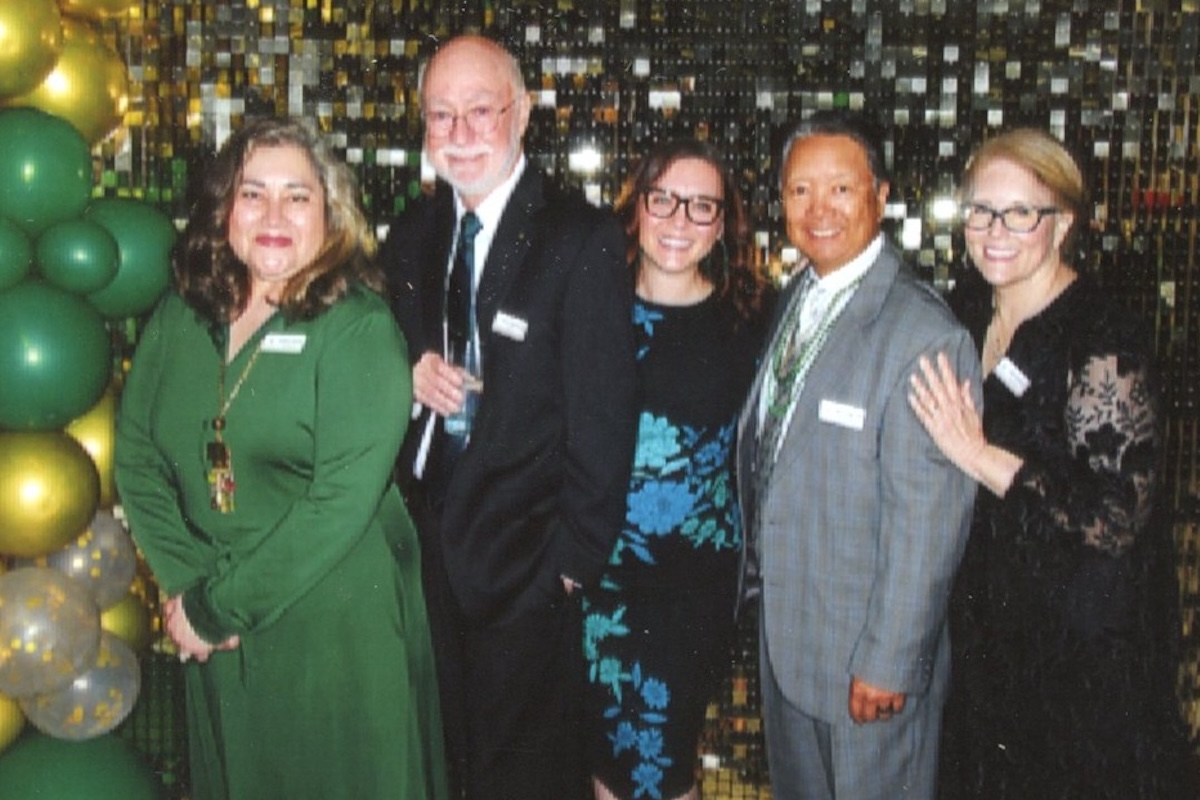
March 14
Dublin Historical Society’s Shamrock Gala at the Shannon Community Center is a festive tradition that kicks off the celebration for St. Patrick’s Day and is worth the participation for the 21+ crowd. Come in your best cocktail attire to enjoy dinner, music, dancing, a raffle and more.
San Francisco
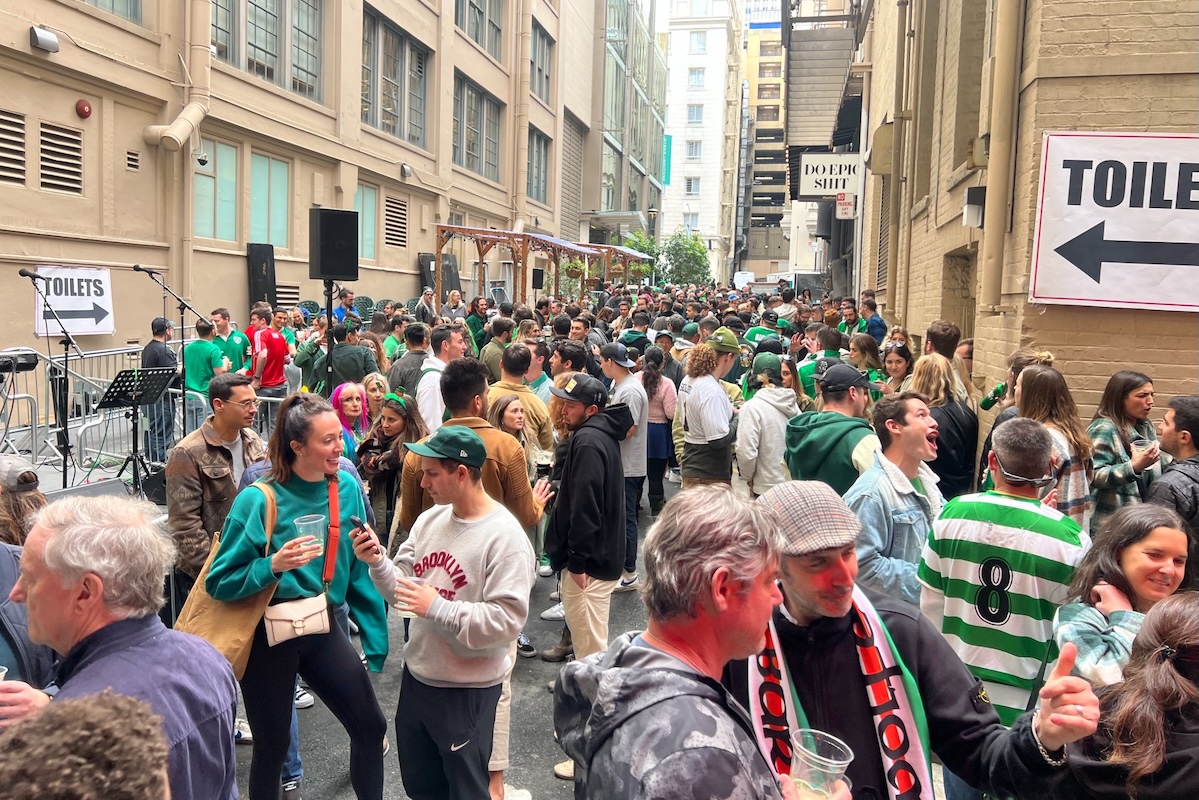
March 15 & 17
Ready to party? This iconic San Francisco block party is the ultimate way to honor this celebration of green and gold. It’s a two-day extravaganza on Saturday and Monday, with both days featuring traditional Irish music and Celtic rock.
March 15
This parade is the definition of a long-standing tradition, going strong on their 174th year anniversary. This year’s festivities will honor a few members of the Irish American community.
March 14, 15 & 17
Over 20 bars along Polk St. participate in this pub crawl. Actually, make that pub crawls. This party includes three crawls on the Friday, Saturday and Sunday of St. Patrick’s Day Weekend.
March 15
This crawl includes over five venues and 2–3 complimentary drinks, plus exclusive drink and food specials at select locations. Crawlers can also finish the night off with an afterparty featuring a live DJ or band.
March 16
On March 16, the United Irish Cultural Center hosts its block party featuring an all-day lineup of Irish dancing and food at the Cultural Center. Three bars, including the Emerald Pub, are participating in this party on 45th Ave. from Sloat to Wawona (just blocks from Ocean Beach).
Irish Pubs in San Francisco
- The Little Shamrock: Teetering on the edge of the Inner Sunset and across the street from Golden Gate Park’s Botanical Garden is this landmark pub that has backgammon and board games. The walls are filled with pictures from the bar’s 130-year history.
- The Plough and the Stars: A real-deal pub with Irish music or bluegrass playing nearly every night that they’re open. Stop by this spot on Clement St. for a night of pool, dancing and whiskey.
- Shannon Arms: Watch a game, sip your beer and shoot some pool at this cash-only dive on Taraval.
- Maggie McGarry’s: Sit in their indoor space for a football match (that is “soccer” football…), or enjoy a pint from their outdoor parklet. This North Beach bar is known for hosting live music, and its concerts tend to liven up the streets on weekends.
- Abbey Tavern: Another football bar — this time in the Inner Richmond on Geary. This two-level neighborhood joint has the best in bar games, including foosball, darts and pool, plus a good selection of beers on draft.






